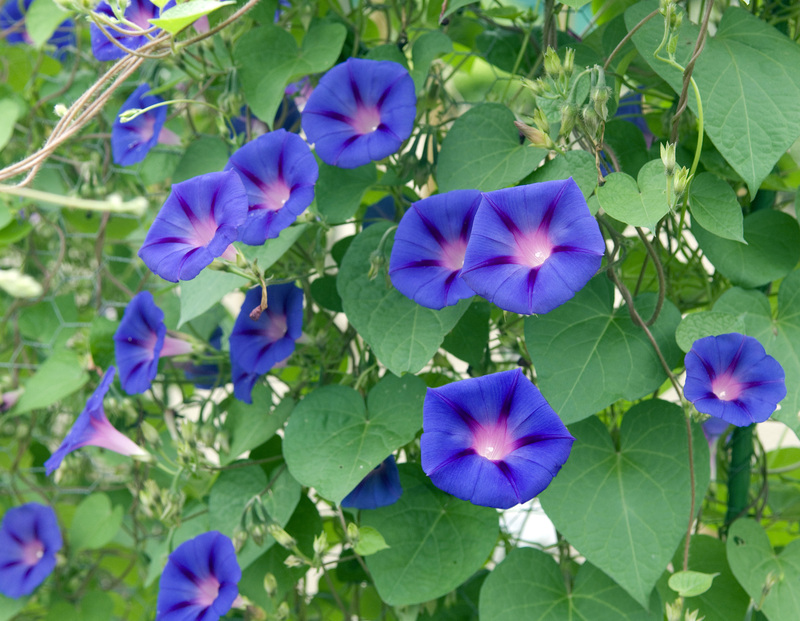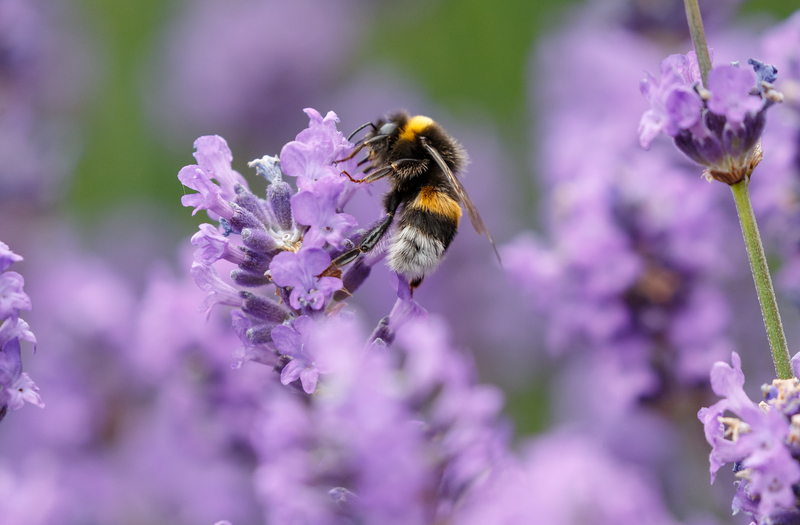Invigorate Shaded Spaces: Evergreen Climbers to the Rescue
Posted on 25/08/2025
Invigorate Shaded Spaces: Evergreen Climbers to the Rescue
Shady corners in gardens are often overlooked, left bare and uninspired due to the challenge of limited sunlight. However, these areas have untapped potential for lush, captivating displays. With the right selection of evergreen climbers, even the darkest spaces can burst with vitality year-round. Discover how these persistent plants can rejuvenate shaded spots, adding life, structure, and color to every part of your outdoor sanctuary.
Why Choose Evergreen Climbers for Shaded Areas?
Many garden enthusiasts find themselves frustrated with shaded spaces that seem impossible to enliven. However, the solution could be as simple as introducing resilient evergreen climbing plants. These versatile flora offer numerous advantages:
- All-year interest: Their foliage remains vibrant throughout every season, keeping your garden attractive even in winter.
- Low maintenance: Once established, these plants require minimal intervention, easing the gardener's workload.
- Efficient space utilization: They grow vertically, making the most out of small or awkward spaces.
- Increased privacy: Thick foliage can act as a natural screen, shielding you from prying eyes.
- Wildlife support: Many evergreen climbers for shade provide food and shelter for birds, insects, and other creatures.
Common Challenges of Shaded Garden Spaces
- Poor sunlight penetration: Hinders growth of many typical garden plants.
- Inadequate air circulation: Fosters moisture, increasing the risk of disease.
- Competition with tree roots: Makes it difficult for shallow-rooted species to thrive.
- Sparse appearance and bare patches: Reduces the aesthetic appeal of your green space.
The right shade-tolerant evergreen climbers are uniquely equipped to adapt, offering a manageable and attractive solution to all of these issues.

Top Evergreen Climbers for Shaded Areas
Selecting the best evergreen climbing plants for shade can transform dreary locations into hidden gems. Here are some outstanding choices to invigorate your shaded spaces:
1. Ivy (Hedera helix)
- Adaptable and hardy: Thrives in deep or partial shade and tolerates various soil types.
- Evergreen foliage: Offers dense, glossy leaves all year, forming a living carpet or vertical wall.
- Ground cover and screening: Functions equally well as a ground cover or climbing screen for walls, fences, and tree trunks.
Tip: Regular pruning will help keep common ivy under control and maintain its attractive shape.
2. Star Jasmine (Trachelospermum jasminoides)
- Partial shade performer: While star jasmine loves some sun, it also blooms well in dappled or light shade.
- Fragrant white flowers: Produces masses of scented blooms in summer.
- Glossy, evergreen leaves: Maintains fresh foliage, providing color even in the dullest months.
Star jasmine is a versatile and elegant choice for shaded patios, pergolas, or north-facing walls.
3. Climbing Hydrangea (Hydrangea anomala subsp. petiolaris)
- Exceptional shade tolerance: Flourishes in full or partial shade, perfect for woodland gardens and shaded facades.
- Showy flower heads: Large, lacecap clusters bloom in late spring and summer.
- Textured, rich-green foliage: Keeps its vibrancy, offering year-round appeal.
Climbing hydrangea is renowned for its self-clinging habit, enabling easy ascent on textured surfaces like brick or tree trunks.
4. Evergreen Clematis (Clematis armandii and Clematis cirrhosa)
- Long-flowering period: Produces enchanting flowers from late winter through early spring.
- Delicate foliage: Narrow, glossy leaves remain lush through every season.
- Suitable for partial shade: Especially effective in spots with morning sun or dappled light.
Evergreen clematis brings an early splash of color and is ideal for training over trellises, fences, and obelisks in semi-shaded positions.
5. Japanese Honeysuckle (Lonicera japonica 'Halliana')
- Vigorous growth: Quickly covers unsightly structures or blank spaces, making it an efficient problem-solver.
- Evergreen in mild climates: Holds foliage all year in warmer areas.
- Sweet fragrance: Pale flowers emit a delightful scent from late spring through summer.
Japanese honeysuckle is a magnet for pollinators and a wonderful option for shaded arbours or privacy screens.
6. Chilean Evergreen Jasmine (Mandevilla laxa)
- Shade-adaptable: Performs best with morning light and afternoon shade.
- Glossy green leaves: Retain vibrancy across the seasons.
- Tubular white flowers: Adds interest and fragrance through summer months.
This elegant climber is perfect for growing in containers or in sheltered, shaded corners needing a touch of refinement.
7. Garrya elliptica (Silk Tassel Bush)
- Tolerates full shade: Excellent for north-facing walls and deep shade.
- Unique winter catkins: Produces striking silken tassels during the dullest time of year.
- Robust foliage: Attractive, leathery green leaves persist throughout the seasons.
Garrya elliptica makes an unusual screen or backdrop in shady borders.
Design and Planting Tips for Shaded Outdoor Spaces
Assess Your Shade Levels
- Deep shade: Receives little or no direct sun.
- Partial shade: Experiences sun for a few hours, often in the morning or late afternoon.
- Dappled shade: Under tree canopies or filtered sun through structures.
Match your evergreen climber for shade to the precise light conditions for best results.
Create Layers of Interest
- Use multiple climbers: Combine a few varieties for contrast--try mixing ivy with clematis for textural diversity.
- Add understory shrubs: Choose shade-loving evergreens or ferns for a ground-level boost.
- Incorporate vertical structures: Install trellises, pergolas, or frames to support growth and draw the eye upward.
Soil and Watering Needs
- Rich, well-drained soil: Add organic matter to improve structure and moisture retention.
- Consistent moisture: Shady areas may remain damp, but roots can compete for water under trees--monitor hydration closely.
- Mulch generously: Mulching insulates roots and preserves soil moisture, reducing the need for frequent watering.
Ongoing Maintenance
- Prune regularly: Trim to keep climbers within bounds and encourage dense, leafy growth.
- Pest inspection: Watch for slugs and snails, especially in moist, shaded environments.
- Fertilize periodically: Use a slow-release fertilizer in early spring to support lush foliage.
Creative Uses for Evergreen Climbers in Shaded Gardens
Camouflage Unsightly Features
Old sheds, utility boxes, or barren fences can be skillfully masked by vigorous shade-tolerant evergreen climbing plants. Opt for fast-growing options like ivy or honeysuckle to quickly obscure unattractive elements.
Frame Entrances and Pathways
Use evergreen climbing plants for shade to soften arches, trellis gates, or the edges of pathways. Lush foliage creates a sense of mystery and invitation, elevating the atmosphere in every season.
Create Privacy Screens
Secure privacy while adding visual interest by training evergreen climbers onto fences or lattices. This living wall solution works particularly well in urban gardens with shaded boundaries, providing year-round seclusion.
Add Color and Texture
Mix and match species to combine diverse leaf shapes, sizes, and colors. For example, the variegated leaves of certain ivies can be paired with the star-like flowers of star jasmine for multi-layered beauty.
Biodiversity Benefits of Evergreen Climbers in Shade
- Winter shelter: Offer crucial havens for overwintering insects and nesting birds.
- Nectar and food source: Species like jasmine and honeysuckle attract bees, butterflies, and pollinators even in shady gardens.
- Habitat connectivity: Dense, evergreen foliage creates corridors for wildlife to move safely across your yard.
Choosing shade-tolerant evergreen climbing plants supports a thriving and balanced garden ecosystem.
Expert Tips for Succeeding with Evergreen Climbers in Shaded Spaces
- Acclimate young plants: Start climbers in containers for a season, gradually introducing them to their final, shady position.
- Monitor for signs of stress: Yellowing leaves may signal insufficient nutrients or excessive dryness--even shade can experience drought!
- Prioritize suitable plant support: Ensure climbing frames or wires are sturdy enough for mature, dense evergreens.
- Pair with complementary plants: Mix with shade-tolerant perennials or woodland bulbs for layered impact.

Frequently Asked Questions -- Invigorating Shade with Evergreen Climbers
- Which evergreen climber is best for deep shade?
Common ivy (Hedera helix) is among the most shade-tolerant, thriving even in dense, north-facing corners. - Can I grow evergreen climbers in containers in shaded areas?
Yes! Choose compact varieties and use high-quality soil. Monitor moisture, as containers can dry out more quickly. - Do evergreen climbers need much pruning?
Regular pruning controls their size and encourages bushy growth. Most require a simple trim once or twice a year. - Will these plants damage walls or buildings?
Some, like ivy, have self-clinging roots that may invade cracks. Always check your structures and maintain healthy surfaces before planting. - How fast do evergreen climbers grow in shade?
Growth rates depend on species and shade levels. Honeysuckle and ivy are generally quick, while clematis and hydrangea may be slower in deep shadow.
Conclusion: Transform Shaded Spaces with Evergreen Climbing Plants
With thoughtful selection and care, evergreen climbers can truly rescue even the gloomiest corners of your garden. These tenacious plants deliver year-round structure, color, and privacy where most others fail. Whether you wish to create a serene retreat or a vibrant wall of green, invigorate your shaded areas by turning to shade-tolerant climbing evergreens--and unleash their full potential for beauty, wildlife, and enjoyment every day of the year.

